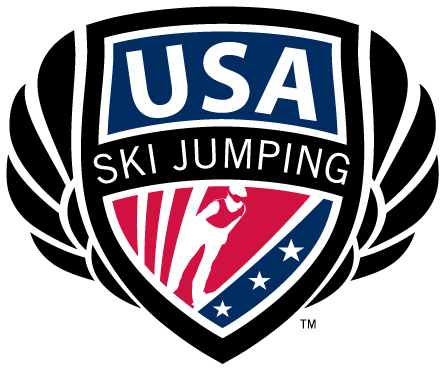Glossary of Terms
Bar Starts – The jumper sits on the bar before he/she goes down the “inrun,” and is also called the gate.
Inrun – Starts at the top of the “bar starts” and ends up on the “takeoff”.
Takeoff – The place where the jumper lifts into the air.
Knoll – The first part of the landing hill and starts right underneath the takeoff.
P Point/Blue Line – The point on the landing hill where the knoll ends designated by two blue lines running down both sides of the landing hill.
K Point/Red Line – The point where the steepest part of the hill ends and the hill begins to flatten out designated by two red lines.
Designation of the Hill Size of a Ski Jump – Hills are designated by both K Points and Hill Size, which is the furthest distance safe to land.
Inrun Position – The position the ski jumper uses to gain speed and from which the jumper takes off.
Takeoff Move – The move from the inrun to the flight where force and direction are established.
Flight Position – The position that a jumper flies in.
Cocking the Ankles – Pulling the toes and foot up as if you were flying through the air to keep skis up and stabilize the “V” in the air.
The “V” – The V formed by the skis creates a larger surface area for the jumpers to get lift.
Telemark – A graceful way to finish the jump that gains points from judges with one foot slightly in front of the other and arms out to the side and forward.
Equipment Needed
Skis/Bindings/Boots – Most skiers can rent skis and boots from their club.
Helmet – All Skiers must wear a helmet while jumping. FIS approved helmets are required for all sanctioned hills and events.
Flight Suit – Flight suits are sometimes available to rent. The suits are constructed out of a special foam fabric and are designed to create lift in the air and protect a skier if they fall.
Goggles – Ski Goggles are not necessary for small jumps but can be helpful on larger hills or when it is snowing. Choose a pair of goggles that fit your helmet.
Gloves – Gloves are important in both winter and summer to protect your hands. Choose a pair that is appropriate for the weather.
Important Websites
USA Nordic: usanordic.org
US Ski and Snowboard: usskiandsnowboard.org
International Federation of Skiing: fis-ski.com
Clubs Across the Country: usanordic.org/clubs
What is Ski Jumping?
Ski Jumping is a sport in which skiers go down a ramp, jump and attempt to land as far as possible down the landing hill. In addition to the length of the jump, judges give points for style.
Ski Jumps range in size from a 5 meter to a 200 meter. This distance is the length from the takeoff to the jump to where the landing hill starts to flatten out. Olympic size ski jumps include a K-90 and K-120 meter. Ski flying hills go up to 225 meters.Elements of a Ski Jump
Is Ski Jumping Safe?
While injuries are possible in any activity, studies have shown that Ski Jumping is a very safe sport especially relative to other commonly played sports and other skiing disciplines.
Safety and Progression
Each jumper starts out on the smallest hill with alpine skills, and progresses to the next larger hill when ready.
Each skier progresses at a pace that is right for them with safety as the primary objective and with the input of experienced coaches who understand the importance of foundational skills.
US Ski and Snowboard (formerly US Ski and Snowboard Association or USSA) is the governing body for all ski and snowboard disciplines except for biathlon. The US Ski Team is the skiing branch of US Ski and Snowboard.

USA Ski Jumping is a 501(c)(3) leadership organization for men’s and women’s Ski Jumping. This includes day to day operations and financial support for men’s national teams and conducting nationwide sport development and event series for both men and women.